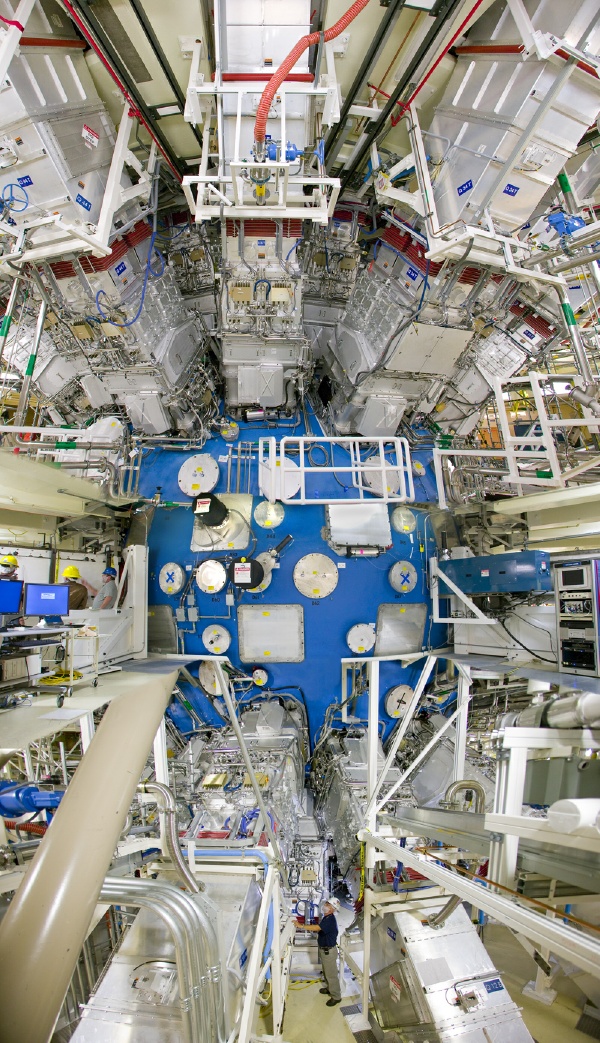That would mean a limitless new source of energy for homes, factories, and businesses.
Scientists have been trying to achieve controlled nuclear fusion for almost 50 years. In 2010, researchers at the NIF at Lawrence Livermore National Laboratory in California will focus the energy of 192 giant laser beams onto a pea-sized target filled with hydrogen fuel. These lasers represent the world's highest-energy laser system. The scientists hope that their effort will ignite, or fuse, the hydrogen atoms' nuclei to trigger the high energy reaction.
The NIF building is ten stories tall and has the width of three football fields. The facility, which is 95 percent complete, has taken more than a decade to build at an estimated cost $3.5 billion. Next year, its 192 intense laser beams will deliver to its target more than 60 times the energy of any previous laser system.
Chemists are preparing to pitch in for one of the largest and most important scientific experiments in history -- next year's initial attempts at the National Ignition Facility (NIF) to produce the world's first controlled nuclear fusion reaction. Credit: Lawrence Livermore National Laboratory
"The idea is that the lasers will fuse hydrogen particles together, producing neutrons," says Dawn Shaughnessy, Ph.D., a scientist with Lawrence Livermore National Laboratory and one of many scientists who plan to analyze materials produced by the reaction. "We'll collect and measure the materials produced from the ignition and hopefully be able to determine how many neutrons were made. More neutrons mean that more fusion has occurred."
NIF Science Director Richard Boyd, Ph.D., says that the NIF facility will offer unprecedented opportunities to advance the field of nuclear chemistry, with a special focus on nuclear reaction studies and the nuclear reactions of astrochemistry, the chemistry of outer space.

Composite photo shows all three floors containing the 264,000-pound, 10-meter diameter target chamber. Diagnostic instruments will be attached to the round hatches. Photo montage by Jacqueline McBride
"A facility like this has never before been available to do experiments in nuclear chemistry," says Boyd, who is co-chair of a special ACS symposium, "Nuclear Diagnostics in Fusion Energy Research," during the semi-annual meeting of the American Chemical Society.. "We're going where people have never gone before, and that could lead to some exciting, and possibly unanticipated, discoveries."
Scientists in France, the United Kingdom, Japan, and China are also developing laser fusion facilities. The ones in France and China will be similar to NIF, but NIF will begin operating several years before the other two. The facilities in Japan and the U.K. will be less powerful than NIF; they will try to achieve fusion with a somewhat different technique than that used initially at NIF.
None of these facilities could produce a dangerous condition, Boyd says. As soon as the target's fuel is expended — in just a few billionths of a second — the reaction stops, he points out.




Comments